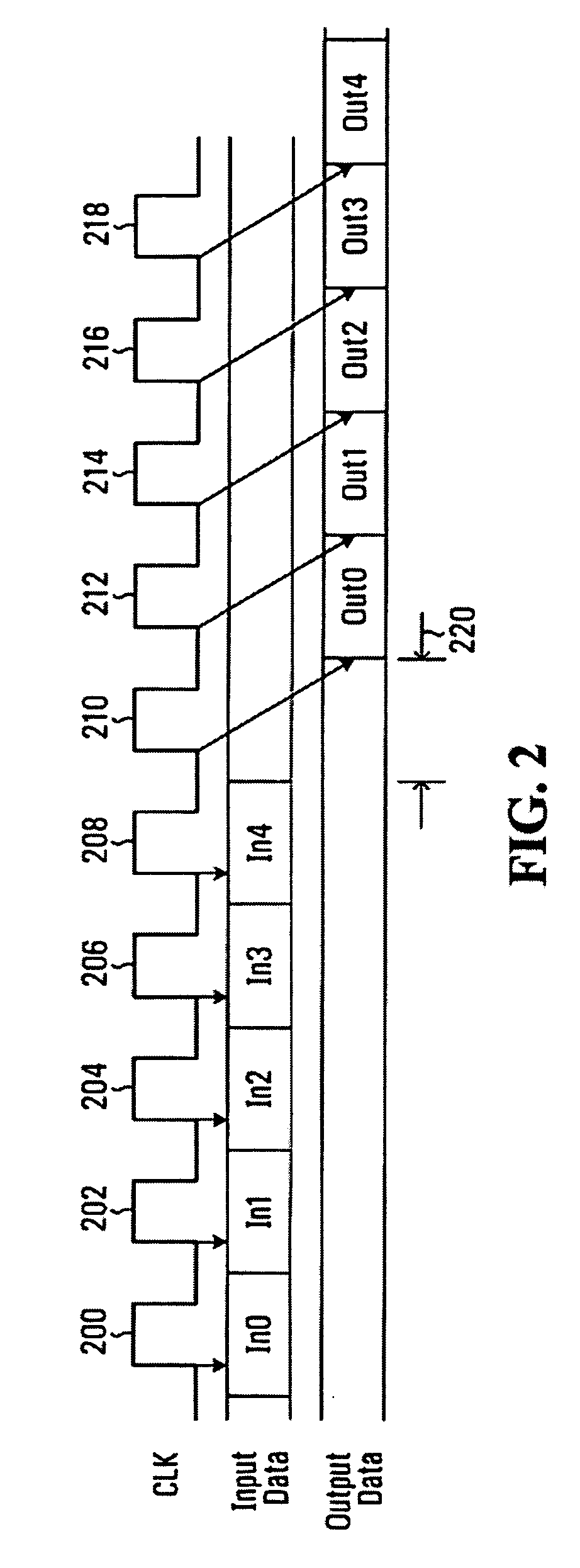Packet based ID generation for serially interconnected devices
a serial interconnection and device technology, applied in the field of serial interconnection devices, can solve the problems of degrading the total increasing delay time, and reducing the performance of multi-drop configurations, so as to improve the bandwidth, reduce noise, and reduce interference between data lines
- Summary
- Abstract
- Description
- Claims
- Application Information
AI Technical Summary
Benefits of technology
Problems solved by technology
Method used
Image
Examples
Embodiment Construction
[0051]In the following detailed description of sample embodiments of the technique, reference is made to the accompanying drawings which form a part hereof, and in which is shown by way of illustration specific sample embodiments in which the technique may be practiced. These embodiments are described in sufficient detail to enable those skilled in the art to practice the technique, and it is to be understood that other embodiments may be utilized and that logical, mechanical, electrical, and other changes may be made without departing from the scope of the technique. The following detailed description is, therefore, not to be taken in a limiting sense, and the scope is defined by the appended claims.
[0052]In general, the one cycle latency between two adjacent devices connected in a daisy chain fashion as provided by the configuration taught by the above-referenced Thomson et al. may not provide enough time margin to perform the interpretation and generation of packet commands in a ...
PUM
 Login to View More
Login to View More Abstract
Description
Claims
Application Information
 Login to View More
Login to View More - R&D
- Intellectual Property
- Life Sciences
- Materials
- Tech Scout
- Unparalleled Data Quality
- Higher Quality Content
- 60% Fewer Hallucinations
Browse by: Latest US Patents, China's latest patents, Technical Efficacy Thesaurus, Application Domain, Technology Topic, Popular Technical Reports.
© 2025 PatSnap. All rights reserved.Legal|Privacy policy|Modern Slavery Act Transparency Statement|Sitemap|About US| Contact US: help@patsnap.com



